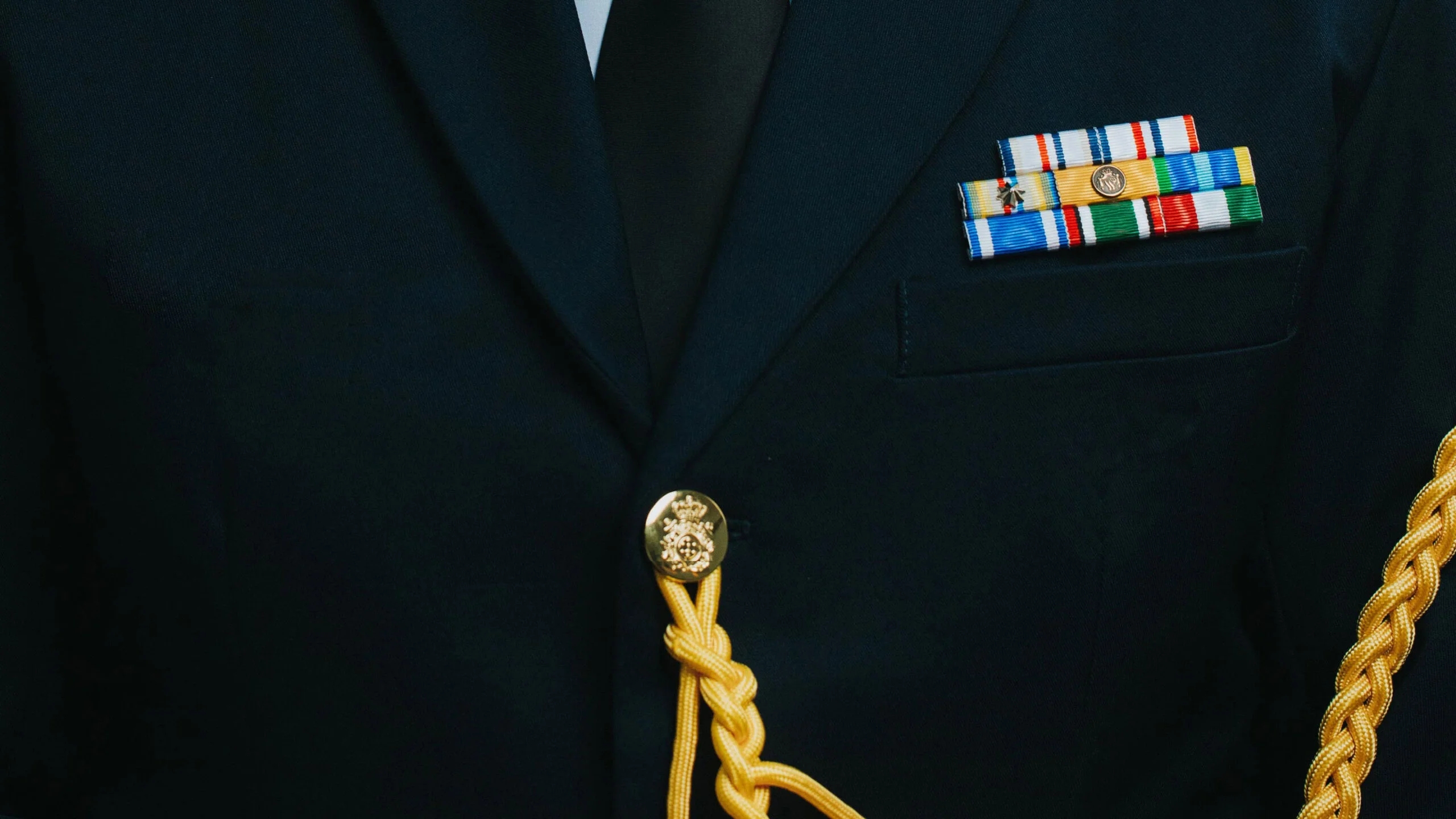Have you ever watched a stirring military drama or action-packed war film and noticed those colourful, carefully arranged bars on the soldiers’ chests? They’re more than just embellishments – they’re tales of valour, dedication, and service woven into every thread. These items, often dubbed “chest candy,” are a testament to a journey of sacrifice and honour.
Crafted from the finest high-quality ribbon and premium metal backs, these customisable medal ribbon bars reflect your dedication and valour. They’re your canvas, where you can handpick each ribbon to symbolise your achievements, missions accomplished, and milestones reached. With secure clutch pins, they will stay in place, no matter where your service takes you.
Significance

Military ribbon bars aren’t just simple strips of fabric – they carry a lot of significance and history behind them. Soldiers can earn medals for all sorts of reasons: personal achievements, unit achievements, and even for serving in specific regions. Take the Afghanistan Campaign Medal, for example. If a soldier spent 30 consecutive days – or 60 non-consecutive days – serving in Afghanistan, they’d be awarded this medal as a symbol of their dedication and service. If soldiers had to wear all their medals at once, it’d be quite the sight, not to mention clunky and noisy. When soldiers are wearing their service dress uniforms – essentially their office attire – their medals are represented by these more compact and streamlined bars.
Medal ribbon bars are essentially scaled-down versions of the suspension ribbons that typically accompany medals. You know, those colourful ribbons you see pinned to the chests of soldiers during formal ceremonies. The design is simple: they’re just reductions of these awards. Soldiers typically wear the full-sized version during formal occasions, while the compact counterparts are more practical for everyday wear on the uniform.
You might wonder why the focus is on the suspension element rather than the medal itself. This is because, for visual clarity and practicality, this part is easier to scale down. So, when soldiers are going about their duties in their service dress uniforms, these items are much more practical and comfortable to wear. But not all service ribbons have corresponding medals. Some of them are the entirety of the award themselves. It’s a reminder that in the ever-evolving world of military honours, simplicity and practicality sometimes take precedence.
How Do You Wear Ribbon Bars?

When you’re wearing a ribbon bar, you shouldn’t wear it with the actual medal itself. Instead, it represents the medal that’s been awarded to the wearer. Think of it as a compact and convenient way to showcase your achievements and honours. You can mix and match ribbons from different medals, and they’re mounted in a specific order of precedence, ensuring that each one gets its moment in the spotlight.
When it comes to sizing, there are some rules to follow. According to dress manual protocols, they shouldn’t exceed a maximum width of four ribbons. If you have more than four awards, you should wear them in separate rows. However, for females, the maximum width is typically three instead of four. If you’re not serving in the Australian Defence Force (ADF), you have the option to get your bars plastic-coated for added durability. This protects them from water or beverage damage, but ADF members usually skip the plastic coating, as it’s not in line with their dress regulations. Most of them come equipped with two secure clutch pins for easy attachment, but if you prefer a brooch mounting, let the seller know during the checkout process. Some designs may need additional devices like rosettes or stars to signify extended service or to represent specific medals correctly. For example, you might see a miniature cross rosette on the Victoria Cross ribbon or a 1960 rosette on the Vietnamese Campaign Medal.
When Can You Wear Them?

Ribbon bars are your go-to accessory for uniform shirts or jackets while you’re still in service or part of certain uniformed civilian gigs, but they’re not meant to be worn with your actual medals. They’re stand-ins for the impressive awards you’ve earned over the years. So, when dressing up for formal events, that’s when you bring out your actual medals. But for everyday wear on your uniform, you should consider wearing bars. They strike a perfect balance between style and protocol.
History
In the early 1900s, the U.S. military was still evolving, and so were its uniform practices. With a surge in military campaigns and expeditions, there arose a need for a more practical way to showcase military achievements. Around 1905, the U.S. Army, under the support of President Theodore Roosevelt, began creating awards to honour service in various military campaigns. Not long after, the Navy joined the ranks, issuing authorisations for awards dating back to significant historical events like the Civil War and the Spanish-American War.
Traditionally, decorations were reserved for formal uniforms, but as the 1900s progressed, the military’s uniform landscape began to shift. Military personnel needed a way to proudly display their hard-earned awards and decorations on their duty uniforms. Thus, the use of ribbons became mainstream, serving as a visible representation of their achievements while on the job. Fast forward to the 1990s, and there was a transformation in ribbon design. Gone were the clunky and chunky racks, replaced by sleeker, thinner ribbon bars. This evolution not only reflected changing fashion trends but also symbolised the military’s adaptability to modern needs and practices.

Leave a comment